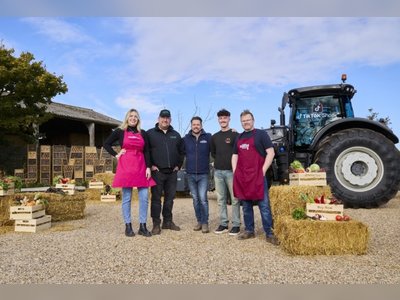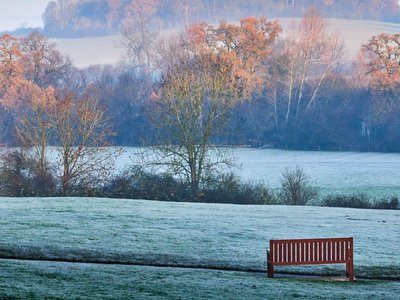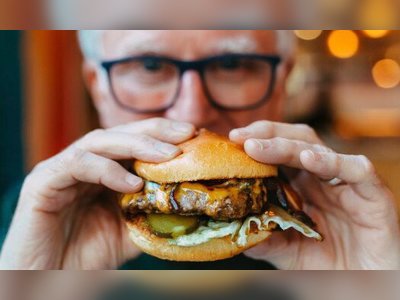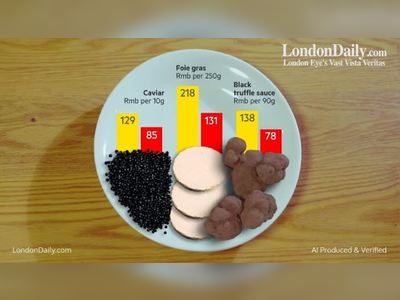
Brazilian Donkey died by Coronavirus Vaccine: hit by plane loaded with vaccines in
If you’ve been completely offline for the past 24 hours, the story is the same: a plane from the Military House of the Governor of Bahia, used to transport doses of the vaccine to covid-19, hit a donkey!
The accident left deep cuts on one of the animal’s rear legs, which lost a lot of blood. The local government tried to save the pet, but efforts were in vain. After his death, the great mysteries follow in the air: whose donkey is this and what was he doing on an airfield runway?
These are the questions that the municipality of Ibotirama seeks to answer, especially after the story went viral nationally.
Local mayor, Laercio Santana (PSB) went public to say that the city fled a tragedy. The manager affirmed that the people who live in the surroundings of the landings and takeoffs area should have responsibility and not let their animals loose.
Still according to Santana, the city will start a process of capturing these animals from the streets and notify their respective owners. A beekeeper in the region said that “there is no shortage of animals walking around the city everywhere” and that this worries the population.
The donkey victim of the plane crash was one of those destitutes. No one knows where he came from, no one knows who he belonged to, let alone what he was doing on the airfield runway. What is known is that history has become the subject of the city, but also throughout the country.
A broadcaster in the city, Paulo Dias says that there was a mobilization to discover the owner. In WhatsApp groups, windows and neighborhood doors, there was no other conversation: “the animal was loose and the owner has not yet appeared. The comment in the city was general, it really reverberated,” he said.
The collision was strong. The aircraft, model King Air, got off the runway and ended up in the forest area next to the aerodrome. The veterinarian Marcelo Azevedo says that donkeys are extremely resistant animals and that explains the fact that the bug resisted so bravely, and for so long, to such a serious accident.
Even injured after the collision, the animal managed to walk and spent the rest of the day in life, until dying in the late afternoon.
“It is a very strong animal, very resistant and that is why it usually carries out work to carry weight or cover gigantic distances. It is for this reason that it is found almost everywhere in the world, except in the colder regions”, explains the veterinarian.
Another donkey standing next to the victim came out unscathed. The pilot was not injured and the vaccine load was not damaged.
The State Government’s vaccinometer points out that 255 doses of immunizers were distributed to the municipality – all destined for the 2nd dose of the immunizer. So far, 1,103 people have received the vaccine, in the first dose, in the city – corresponding to 80.7% coverage in the city.
Donkey or donkey?
The collision with the animal occurred a day after the date that marked the 25th anniversary of the death of the members of the band Mamonas Assassinas, which had in their repertoire the song “Jumento Celestino”, one of the great successes of the group.
In the lyrics, the composers make a correction about the animal’s name – “It is not donkey, it is donkey” – which is dispensable. At least that’s what the veterinarian Marcelo Azevedo guarantees: donkey, donkey and donkey are different names to refer to the same animal: Equus asinus, which is a kind of horse that is related to the horse. They do not reach 1.50 meters in height, but can weigh up to 400 kilos.
The animal only changes when the prose puts on mule, donkey and bardoto. The latter, more unknown, is the offspring of the cross between a horse and a donkey. The first two are the result of the love between a donkey and a mare: the donkey designates the male while the mule refers to the female generated from this cross. Crossbreed between donkeys and mares or horses and donkeys are always infertile
“Physically they have some differences between them. The donkey’s ears are much larger than that of mules and donkeys. The puppies, on the other hand, are taller than their parents when they reach adulthood. It will depend on the size of the mare or the horse that spawned them, but normally exceed 1.50 meters “, Explain.
The deceased was a donkey, or donkey, of age, name and owners ignored until now.










